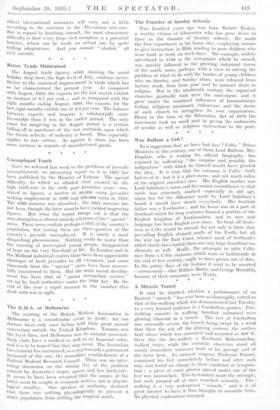Unemployed Youth Since we referred last week to the problems
of juvenile unemployment, an interesting report on 'it in 1934 has been published by the Ministry of Labour. The special difficulty, to which we alludecl—that created by the high birth-rate in the early post-Armistice years—was, stated in figures, a matter of 80,000 extra juveniles seeking employment in 1933 and 160,000 extra in 1934. The 1983 increase was absorbed ; . the 1934 increase has not been, though the later months have yielded improving figures. But what the report brings out is that the non-absorption is almost entirely a feature of the " special " a areas. These areas. contain perhaps fifth of the country's a Population, but among them are three-quarters of the country's • juvenile unemployed. It is surely' a most disquieting phenomenon. Nothing could be worse than the Massing of unoccupied young people, disappointed of hope on the very threshold of life. In London and in the Midland industrial centres there have been appreciable shortages of local juveniles to fill vacancies, and some thousands from the special 7 areas have been- success- fully transferred to them. But the main recent develop- ment has been that of " junior instruction centres " set up by local authorities under the 1934 Act. By the end of the year a rapid increase in the number thus dealt with was in sight.






































 Previous page
Previous page